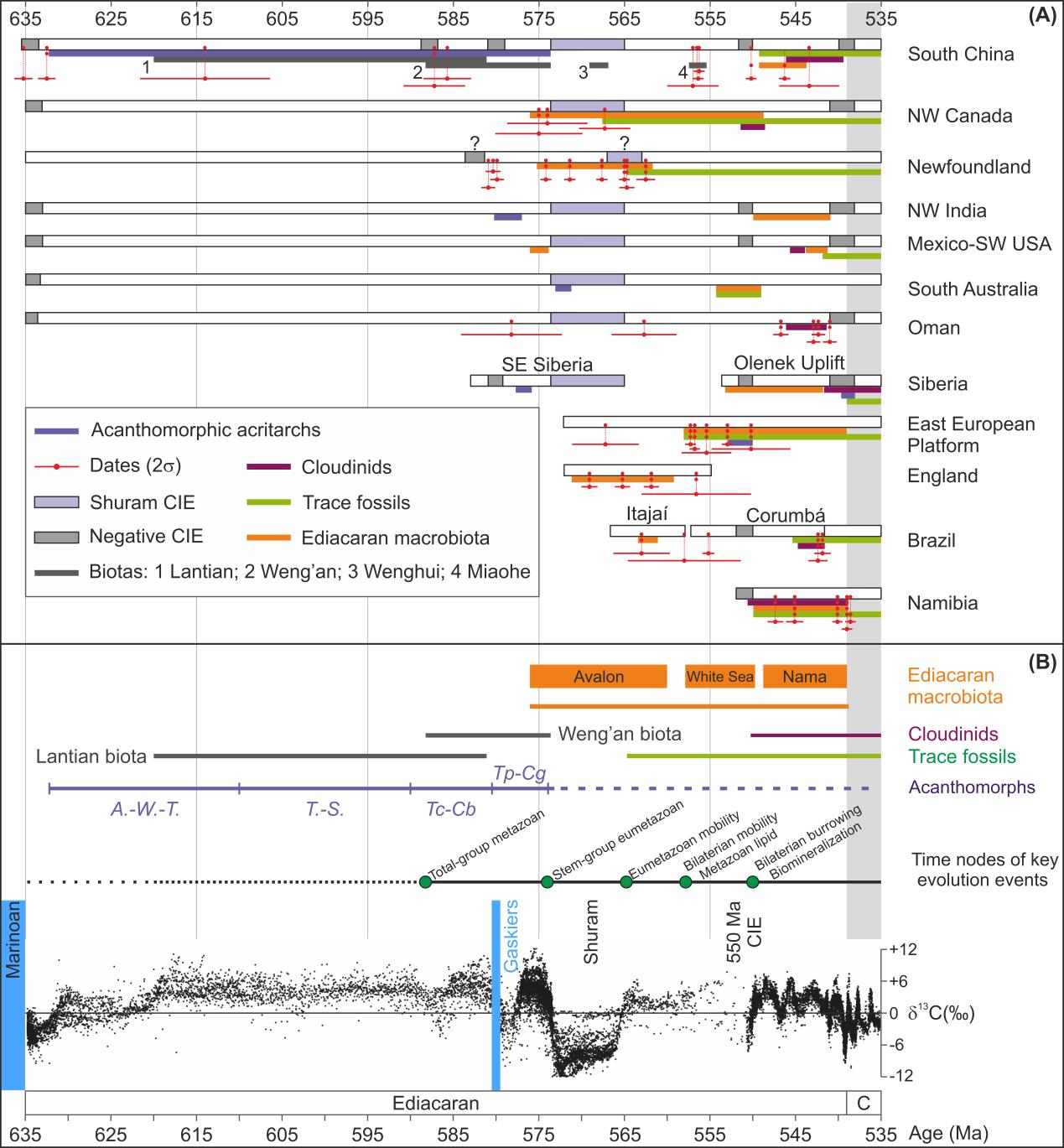The Ediacaran Period (635–539 million years ago, Ma) is a pivotal period in Earth history, archiving the rise of complex macroscopic life. This evolutionary milestone occurred in the aftermath of extreme climate perturbations, the Cryogenian snowball Earth events, and amid dramatic changes in the global carbon cycle and ocean redox conditions.
These perturbations, including the Shuram event which is the largest magnitude negative carbon isotope excursion in Earth history, have been documented worldwide, and are commonly employed to establish regional to global stratigraphic correlations. However, there is a lack of a chronostratigraphic framework at sufficient resolution for testing hypotheses related to the tempo, magnitude/duration of the events (especially the Shuram), their global expression, or their co-relationship with biospheric evolutionary innovations.
Published in Science Advances, a study by an international research team led by Prof. Zhu Maoyan (Nanjing Institute of Geology and Palaeontology, Chinese Academy of Sciences) presents new radio-isotopic dates from Ediacaran successions in South China and White Sea area. The new dates provide age constraints on both the Ediacaran fossil assemblages and the carbonate carbon isotope perturbations.
The upper Ediacaran is characterized by the typical Ediacara-type fossils. Three assemblages of the fossils have been recognized: the Avalon, White Sea, and Nama. The age ranges of the Avalon and Nama assemblages have been constrained at 575–560 Ma and 550–539 Ma, respectively. New dates from the study indicate that the White Sea assemblage spans a time interval started earlier than 557 Ma and ended later than 553 Ma. The age constraints on these three fossil assemblages can facilitate our understanding of the evolution in the late Ediacaran. New dates from South China also provide age constraints on the Doushantuo acanthomorphic acritarchs, Weng’an biota, Wenghui biota, Miaohe biota, and Ediacara-type fossils in the Dengying Formation.
The terminal timing of the Shuram event was constrained at 551 Ma. However, the lack of high precision radio-isotopic dates and the complexity of local stratigraphy have given rise to much debate about the number of negative carbon isotope excursions in the late Ediacaran and the age of the Shuram event. The new dates indicate that there are two negative carbon isotope excursions in 575-550 Ma. The older and long-lasting one is the Shuram event, and the younger and short-lived one occurred at 550 Ma. The authors also compile a global Ediacaran geochronology database and suggest that the Shuran event occurred between 575 Ma and 565 Ma with an uncertainty on the order of a few million years. Older than the Shuram event, another short-lived negative carbon isotope excursion, which is locally called WANCE in South China, is dated at ~587 Ma.
The presented Ediacaran age model for the carbon cycle perturbations and fossil records provides the necessary chronometric context to test causal relationships, if any, between them. At the current resolution, these transitions in the fossil record coincide with the carbonate carbon isotope excursions, suggestive of a potential causal relationship between environmental perturbations recorded in the carbon cycle and biological turnovers.
The study was supported by grants from the Chinese Academy of Sciences, the National Natural Science Foundation of China, the Natural Environment Research Council of the UK, the United States National Science Foundation, and the Russian Science Foundation.
Reference: Yang, C.*, Rooney, A.D.*, Condon, D.J., Li, X.-H., Grazhdankin, D. V, Bowyer, F.T., Hu, C., Macdonald, F.A., and Zhu, M.*, 2021, The tempo of Ediacaran evolution. Science Advances, 7, eabi9643. https://www.science.org/doi/10.1126/sciadv.abi9643.

Fig. 1 Integrated radio-isotopic dates, fossil ranges, and carbon isotopic profile of the Ediacaran Period
Contact:
LIU Yun, Propagandist
Email: yunliu@nigpas.ac.cn
Nanjing Institute of Geology and Palaeontology, Chinese Academy of Sciences
Nanjing, Jiangsu 210008, China
Download:
